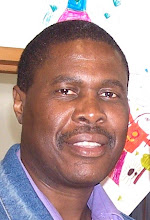List some of the ways that digital images are stored, transferred, and manipulated using information technology.
Hardware: USB (Universal Serial Bus), Computer RAM (Random Access Memory, the computer's memory), Compact Disc (CD), DVDs, Graphic Cards, Hard Drive, Key Board, Mouse, Printer etc.
Software: Auto CAD, MS Word, Video games, world wide web (www) etc.
Provide at least 3 examples of the use of digital imaging to provide information and recording
WEBCAM, Internet sites, Youtube videos, Patient progress photoes, google earth, wises maps, dictaphone, digital recorders, mp3 players etc.
Patient progress photoes: Photographing a patient's progress stages as Intervention plans are monitored to gauge how much progress they are making.
Youtube video: This is now used by other people with more knowledge about particular conditions and/or diseases to pass on their knowledge and experience to those looking for it in far away places. This can also lead to exchange of vital information across the globe, formation of groupings that can have lively discussions on the Internet through comments and responses.
Digital recorders: can be used by Traumatic Brain Injury patients to store instructions for specific processes they might be struggling to remember, or as audio diaries.
"A new technology is rarely superior to an old one in every feature"
New Digital Camera Technology is generally superior to the old because it always brings with it the latest and most advanced photo and video shooting software. A good example is the pixels that enhance picture quality and clarity that are always being increased into exponential mega pixels.
Image storage is also easier with new technology because there are various ways of doing it, e.g. on the camera graphic card, flashcard, CD, DVD etc. One can also easily edit their photos/videos. Printing can be done anywhere. Viewing can be done on the PC or TV screen at home.
Compared to old technology, new technology is more expensive and tends to change very fast making recently acquired gadgets obsolete in a matter of months. Old technology has one of its drawbacks the use of specialised dark rooms to process photos.
Given the prevalence of image capturing and distribution using IT, what ethical issues may arise with their use?
Ownership of photos or videos gets the same respect and treatment as in intellectual property ownership. Informed consent is of paramount importance, otherwise one winds up defending themselves in a court of law after being sued for unauthorised or unethical use of photos and videos.
Briefly discuss some of the ways that digital images could, or, are, being used in occupational therapy practice
Handouts are being designed and produced that have verbal and graphic instructions on how certain techniques should be performed eg standing up after a Total Hip Replacement Operation or proper sitting when driving for energy conservation.
This site would help an OT teach about the rehabilitation of Hip Joint operatees.http://orthopedics.about.com/od/hipkneereplacement/p/hiprehab.htm.
HALLO, KIA ORA. MY NAME IS GODHELP NYASHANU. THE PURPOSE OF MY BLOG IS TO EXPLORE THE DIFFERENT WAYS TECHNOLOGY CAN BE USED TO BRING ABOUT ENGAGEMENT IN OCCUPATION OF PEOPLE WHO HAVE OCCUPATIONAL NEEDS.
About Me

- Godhelp Mutero Nyashanu
- I am a Zimbabwean who is a permanent resident of New Zealand after coming to New Zealand in July 2007. I am currently (in 2011) studying for the Bachelor of Occupational Therapy degree at Otago Polytechnic (second year), Wintec Avalon Drive Campus in Hamilton, New Zealand.
No comments:
Post a Comment